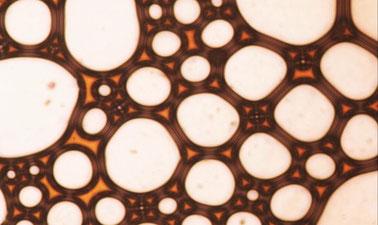MOOC List is learner-supported. When you buy through links on our site, we may earn an affiliate commission.

MOOC List is learner-supported. When you buy through links on our site, we may earn an affiliate commission.
This series introduces various kinetic phenomena in various classes of materials. The course explains how materials develop different microstructure based on different processing techniques, and it relates these microstructures to the properties of the material.
Microstructural Evolution of Materials is intended for engineering and science students and professionals with an interest in materials statistics, kinetics, and microstructural transformations.
Part 1 of the course will introduce important concepts in statistical mechanics that are especially relevant to materials scientists. Topics include solid solutions, the canonical ensemble and heat capacity.
Part 2 of the course focuses on point defect evolution, including diffusion, substitutional diffusion, ionic defects, and ionic conductivity.
Part 3 of the course discusses surfaces and surface-driven reactions. Topics include surface energy, faceted and non-faceted growth, and growth and ripening.
Part 4 of the course focuses on phase transformations, including nucleation and growth, precipitate growth, interface stability, and glass transition.
Prerequisites:
- Parts 1 and 2 of Microstructure of Materials (3.022.1x, 3.022.2x)
- University-level Calculus
- Structure of Materials (Ideally, 3.012Sx: Structure of Materials
- Thermodynamics (ideally, 3.012Tx: Thermodynamics of Materials)
What you'll learn
At the end of this course, you will be able to:
- Predict surface energy along various crystalline planes
- Understand how surface energy can be exploited in nanoparticle synthesis
- Explain the Ostwald ripening process in solid solutions
Syllabus
Surface Energy:
- Introduction: Surface Science
- New Surface Creation
- Surface Energy for High-Index Planes
- Surface and Chemical Potential: Spherical Particles
- Surface Effects in Nanosystems
Faceted & Non-Faceted Growth:
- Atomically Smooth vs. Atomically Rough Surfaces
- The Jackson Model of Crystal Growth
- The Jackson Factor
- Morphology of Crystals Grown from Melt
Grain Growth:
- Introduction to Growth and Ripening
- 2-D Grain Growth
- Grain Boundary Motion: Interface Curvature
- Grain Boundary Motion: Laplace Pressure
- Grain Growth Kinetics
Ostwald Ripening:
- Ostwald Ripening Kinetics
- Ostwald Ripening: Mean Field Approximation
- Ostwald Ripening: Particle Coarsening
- Ostwald Ripening: Lifshitz-Slyozov-Wagner Theory
- Practical Implications of Grain Growth and Ostwald Ripening
MOOC List is learner-supported. When you buy through links on our site, we may earn an affiliate commission.
MOOC List is learner-supported. When you buy through links on our site, we may earn an affiliate commission.
